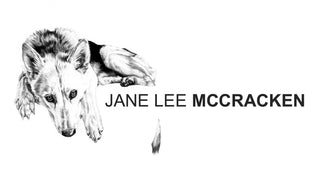Hiroshima Unicorn

Hiroshima Unicorn 2017 green Biro drawing Pinup series
Hiroshima Unicorn | War
Inspired by wartime pinup posters Hiroshima Unicorn is one of a series of layered drawings, which form part of the body of work entitled War that also includes tattoo sculptures (sculptures drawn on in Biro by Jane). This green Biro drawing is a prequel to a work in progress exploring the atomic bombing of Hiroshima in World War II. Intended as a reflective piece, Hiroshima Unicorn presents a mythological universe with hallowed creatures of land, sea, and sky in a verdant Japan before Hiroshima became the first city to experience nuclear warfare. This artwork also explores ‘remembrance’ before war and our insight into the unavoidable consequences of war, including destruction not only of humans and animals but the environment.
Artwork by Japanese print masters as well as several films including Blade Runner 1982, Ridley Scott, and Memoirs of a Geisha, 2005, Rob Marshall also provided inspiration for this piece. The unicorn trotting across the page is a symbol of contrasts. While representing unicorns’ symbolism of purity and innocence, the unicorn is also used as a vessel to highlight commercialism. Blade Runner’s vision of futuristic cityscapes drenched by incessant rain and buildings decked with advertising billboards is projected on the unicorn’s body. Its flank is transformed into a screen for the projection of an alluring but inane advertisement, while the rest of its body is tattooed with traditional Japanese images and patterns. The unicorn, complete with narwhal tusk, a reference to the Middle Ages when Narwhal tusks were sold as unicorn horns, is drawn in typical Western guise, symbolizing the contrasts experienced by Imperial Japan and its internal conflict between traditional values, Westernisation, and industrialization in the early 20th century, which subsequently led the country to war.
The kneeling woman behind the unicorn signifies the Sun Goddess, Amaterasu Omikami, also known as a goddess of the universe. Elements of water and wind are indicated through a representation of Hokusai’s masterpiece The Great Wave, 1831 which rises over Amaterasu’s kimono, through the unicorn and breaks in her windswept hair. Images of actress Zhang Ziyi who featured in the film Memoirs of a Geisha and actress Faye Wong were used as inspiration for Amaterasu’s face.
A Dumbo octopus, Blakiston’s fish owl, Eurasian eagle owl, red crane, South China tiger cub, and carp are amongst the species portrayed within the drawing layers. These species are not only significant beings in Japanese culture but their depiction in this piece highlights the often harmful effects of human intervention in the natural world. In Japan, owls are traditionally thought to bring luck and offer protection from suffering. First discovered in Hokkaido where they are worshipped as a deity, the Blakinston’s fish owl is the largest owl species on earth. Due to habitat destruction less than 150 wild fish owls remain in Japan. As so many species slide towards extinction and are closer than ever to legendary status, indicated through the presence of the unicorn, the two owls not only become symbolic protectors of an ancient landscape but also reiterate that wildlife conservation can reverse the effects of human destruction.
With kind thanks to Dr Jonathan Slaght and the Wildlife Conservation Society for providing and allowing the use of reference images of Blakiston’s Fish Owl."
